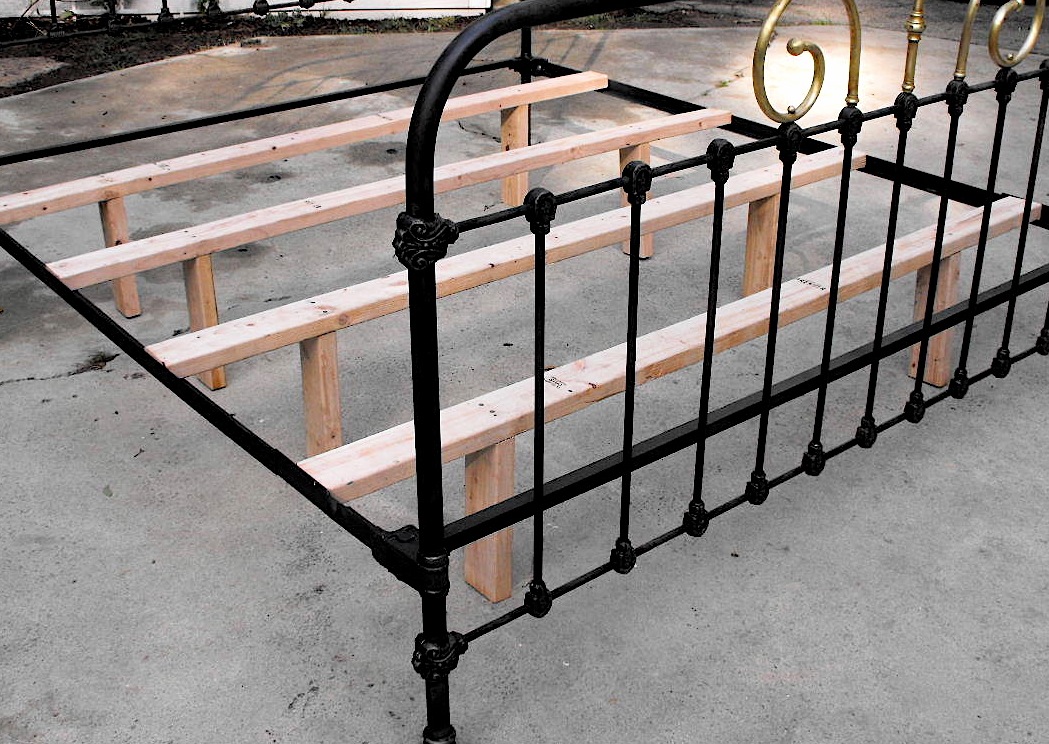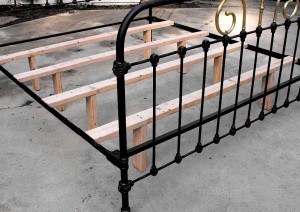When iron beds were at their Zenith in the mid 1800’s, many manufacturers were constructing a very rudimentary metal spring unit to hold the feather mattresses of the day. These metal spring units would later be refined and become known as a “box spring”.
Today’s box springs are tightly wrapped iron coils that resemble a metal coiled spring. In today’s market ,the number of individually wrapped spring coils usually denotes the quality of the mattress that was specifically designed for the box spring that is offered with it. The reason mattress and box springs should always come from the same manufacturer, is that the should have the same amount of springs in the mattress as in the box spring. Most importantly, those springs should be perfectly aligned when setting on top of each other. The reason a mattress store tells you to “flip” and “turn” your mattress on a regular basis, is so constant use of a misaligned spring and mattress won’t then cause bumps, lumps and divots.
In the early 1800’s mattresses didn’t have springs in them and were made primarily with stuffed cotton, horse hair, or feathers. It wasn’t ntil the late 1800’s and early 1900’s that mattresses started being constructed with metal springs.
Because practically no one saves the old metal spring units that were made with the beds of the Victorian period, some stability has to be added today for people wanting to use their modern box springs and mattresses. That stabalizing element i a simple wooden 2″ x 4″ bed slat. Three to four slats per bed are quite adequate in being able to support any weight you might put on them. It is suggested that the wooden slats have short wooden supports nailed under them that extend down to the floor. If two such supports are put on each slat, you’ll never have to worry about the metal side rails “bowing” or any extremely heavy mattress damaging the structure integrity of the bed frame itself.
As you can see in the photo……the wooden supports are designed to take any amount of weight you’d ever want to put on top of them. They add great insurance to the preservation of a 150 to 200 year old antique iron beds.
I hope you’ve found this blog informative . I invite you to revisit my website
to answer any and all questions you might have about antique iron beds.
I also invite you to take a look at our company Face Book page for multiple photo albums on Custom Finishes, Canopy Conversions and a comprehensive “Before & After” King Conversions album.








